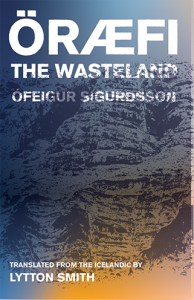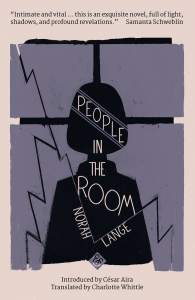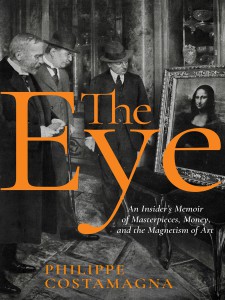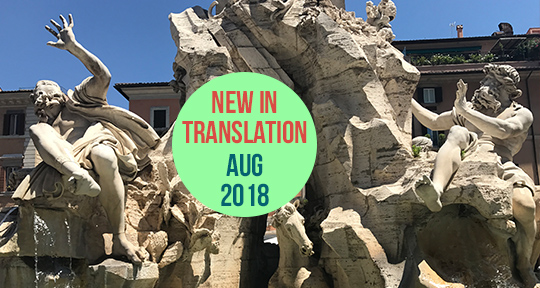From Icelandic landscapes to art history, August brings with it an exciting new selection of books. Whether you’re looking for a book to pass the hot summer days, or are in the market for inspired poetry, the Asymptote team has something for you in this new edition of What’s New in Translation. And if that’s not enough, head over to the Asymptote Book Club for fresh reads, delivered to your doorstep every month!

Öræfi: The Wastelands by Ófeigur Sigurðsson, translated from the Icelandic by Lytton Smith, Deep Vellum, 2018
Reviewed by Jacob Silkstone, Assistant Managing Editor
One of the many epic stories retold in Ófeigur Sigurðsson’s Öræfi: The Wastelands (“that punctuation mark… both pushes words (and worlds) away from one another and means they’re roped together,” according to translator Lytton Smith) is the story of Öræfi itself. Formerly known as Hérað, the Province, a place in which “butter drips from every blade of grass,” it was devastated by the most destructive volcanic eruption in Iceland’s recorded history:
The chronicles record that one morning in 1362 Knappafjells glacier exploded and spewed over the Lómagnúpur sands and carried everything off into the sea, thirty fathoms deep… The Province was destroyed, all its people and creatures annihilated; no sheep or cattle survived, no creatures left alive anywhere… the corpses of people and animals washed up on beaches far and wide… the bodies were cooked and tender and the flesh so loose on the bones it fell apart.
And so Hérað was transformed into Öræfi; the Province, virtually obliterated by a natural act of extreme violence, became the Wastelands. Into that desolate and haunted landscape comes Austrian geologist Bernharður Fingurbjörg, drawn to Iceland both because of his National Geographic subscription and as a perhaps inevitable result of his own past—a past overshadowed by a very human act of violence.
“At heart,” explains Lytton Smith, Ófeigur Sigurðsson’s novel is “a thriller about a man contending with extreme elements.” Any readers settling in for detailed descriptions of harsh but beautiful Nordic landscapes will be rapidly disillusioned, though. Only a few pages into Öræfi’s opening section, one of the main characters has already stripped naked and amputated Bernharður’s penis, which is subsequently dispatched to the Icelandic Phallological Museum by bus, “rolled in cellophane and packed in a cooler to preserve it.” Throughout the novel, violence will be a recurring motif (although the amputation episode is placed in a very different light by the twist on the final page).
The character conducting the amputation is Dr. Lassi, local veterinarian and would-be writer, whose report on Bernharður is employed as a device to the hold the narrative together. Dr. Lassi soon emerges as a powerful character in her own right, delivering an embittered diatribe on her choice of career:
I think all veterinarians planned to become veterinarians as children and fixated on the dream and never found a new dream amid the idea-destroying weight of their home environment: it is a dream that arises when children have somewhat lost faith in humanity or, more accurately, their parents.
Alongside Bernharður and Dr. Lassi, Ófeigur Sigurðsson introduces a fantastic cast of secondary characters, including the dwarf poet Worm Serpent. Incursions into Iceland’s history are combined with anecdotes on a dizzying variety of topics, including an extended sequence on the relationship between classical music and death metal. A retelling of Alfred Wegener and Johan Peter Koch’s 1913 expedition to Greenland is another unexpected highlight.
In the original Icelandic, Öræfi went through five print runs in its first three months and received the Icelandic Literature Prize. Its English translation richly deserves a similar run of success: here is a contemporary epic that demands to be read and reread.

People in the Room by Nora Lange, translated from the Spanish by Charlotte Whittle, And Other Stories, 2018
Reviewed by Lara Norgaard, Brazil Editor-At-Large
Argentina does not lack a rich canon of writers and the world has benefited for decades from English translations of some of the greats. Jorge Luis Borges and Julio Cortázar are some of the best-known Latin American authors, and works by Ricardo Piglia, César Aira, and Roberto Arlt grace our bookshelves. However, of the twentieth-century renowned Argentinian writers translated to English, many are left out—and a disproportionate number of the excluded voices are women. Perhaps the only widely known female Argentinian author is Silvina Ocampo.
It is in this context that And Other Stories’ release of People in the Room, written by Nora Lange and translated by Charlotte Whittle, is so momentous: Lange has never appeared in English before this August, despite her important place in Argentina’s intellectual history. Lange (1905–1972) lived in Buenos Aires and traveled in the city’s famous avant-garde circles of the 1920s and 1930s. She was part of the Florida Group and published in experimental magazines such as Proa and Martín Fierro alongside Borges, who happened to be a distant relative, and Oliverio Girondo, whom she married in the 1940s.
But People in the Room is not simply another example of classic Argentinian fiction. It is unique in content and form. The novel follows a young girl who looks through her bedroom window to the sitting room of her neighbors, three sisters of around thirty years old. The girl takes an interest in these women and begins to observe their movements, their habits, their looks; her attentive search for some unidentified thing grows to the scale and detail of a detective’s investigation, a hunt for some hidden crime, perhaps a blemished memory, a stolen voice. The detective genre is not new to experimental Argentinian fiction, but this text suspends two domestic spheres, with the isolated women in each gazing into the realm of the other.
Indeed, that interchange between external and internal worlds plays out in language as well as space: readers find themselves so deeply ingrained in our narrator’s interior life that the few free-standing lines of dialogue land isolated on the page as though the protagonist observes interactions through the four walls of her private imagination. It is through this imagination, at once obsessive and whimsical, depressive and loving, that we gaze into the hearts and minds of the three nameless women across the street. César Aira, who writes the introduction of the English edition, comments that the book is an allegory for the experience of a young girl becoming a writer, moving from playful imagination to authorial creation. The reader joins the writer in a full-throttled dive into the invented worlds of her characters.
On a formal scale, the novel shares with other texts from the Buenos Aires avant-garde many formal components of the Ultraist movement (a focus on metaphor; a lack of the ornamental, and sentimental components of modernism). But Aira also points out that Lange did something with language that no other writer had ever done before: she delays detail. Subjects rarely lead in her sentences; instead, they arise at the end of a thought, prioritizing the action of each phrase. Consequently, we experience these actions differently. Each utterance becomes ghostlike and disembodied. The language carries a sense of the ephemeral and the imaginative that is so central to the book’s subject matter. And, almost as remarkable as Lange’s formal choices is translator Charlotte Whittle’s ability to do them justice in the English.
People in the Room is more than a title to pick up for a hazy late-summer read (or to flip open in the last days of late-winter chill, as the case may be in southern hemisphere cities like Buenos Aires). It is a text that we should hold onto for many years, place alongside our well-worn copies of Labrynths, and be ready to reopen in those desperate moments of much-needed writerly inspiration.
Beyond personal enjoyment, this novel should serve as an inspiration to publishers and translators to look towards women writers in Argentina. The country has a new wave of key female authors, including Selva Almada, Claudia Piñeiro, and Samanta Schweblin.
Meanwhile, Argentinian feminism grows powerful with the Ni una menos marches against femicide and the recent movement to legalize abortion, symbolized by the green handkerchiefs that spread throughout city streets and social media profiles in 2018. It is time for this feminist energy and the intellectual movements that accompany it to be represented on bookshelves globally.

Thick of It by Ulrike Almut Sandig, translated from the German by Karen Leeder, Seagull Books, 2018
Reviewed by Nestor Gomez, Editor-at-Large
In the translator’s introduction of Ulrike Almut Sandig’s Thick of It, Karen Leeder states that the collection’s original title Dickicht means thicket or jungle. For the title of the translation, Leeder chooses Thick of It which has a similar sound to “thicket” but also introduces elements of otherness, namelessness, the crux of something. “Thick” implies something gooier, stickier, more difficult to wade through and see through. Sandig begins with an epigraph by Kafka of imagining oneself as an Indian riding a horse but in the end there is no Indian, there is no horse, no one is riding anything. This void, this removal sets the tone for what is come.
The collection is divided into sections of North, Centre of the World, South, and ∞, but Sandig chooses to begin outside of those sections with a poem, a starting point for the “you” that begins above the earth and below a silhouette of trees facing a range of snowcapped mountains. Sandig is acutely aware of geography, where oneself is at a point in space, “before you / the rubble of clouds. far below lies your / home, you wrote yourself the poem of it. inside you / the trembling needle that always points / due north, though you’ve no idea what lies beyond” and with a deep breath the “you” plunges into the rubble of clouds to the unknown.
Sandig favors couplets, tercets, and prose poems and isn’t afraid to change the form of the text from left-justified to right-justified, always playing with shape but never losing structure, never losing that “trembling needle that always points due north.” The couplets activate a two-sidedness, a gradual divide, a migration from one place to another and have an airy quality like whispers and tales carried by the wind while journeying through the fog. Anything can happen in these couplets: old mythologies emerge, ingrained memories surge back to the present, the hope of music lingers beneath ready to play, “and the white surface that is your heart shines / once more and we lie on it as if on a lap without / body, an ancient, almost forgotten song in our ears.”
Amongst the poetry there are lines and phrases in bold and their intention is unclear. Not really emphasis but perhaps more so a voice, they are clear “sounds” in the unknown thicket of cardinal directions. These words in bold also echo memories and thoughts that reverberate throughout the collection, “…in all the banks we know / in fact all that you and I know does not count,” and “my hand rests on your back which is already lonely / this photo of us, it’s developing backwards,” once again bringing to mind this latent music or song all around the “you” as they make their way through North, Centre, and South. Upon reaching the end of the journey, a song culminates into being in the form of ∞, a song of no words but as long and lovely as is possible to fit into a single instance of infinity, eternal silence, a meditation of the journey itself without the aid of poetry. Two pages of white space encompass this silent song with only the symbol ∞ to accompany it.
However, the most mysterious part of the collection is not the end but the middle, Centre of the World. This centre only contains a single five-line poem, “we often kiss each other’s faces when they’re wet. / we close the horizontal tear running through / the centre of each of our bodies. we sew / ourselves together, we sew ourselves to. let’s / make of ourselves, of me and you, one silent creature.” At this point we assume the speaker and the “you” make up the “we” in the first line, but why are their faces wet? What is this horizontal tear that speaks of geography but also hints at past injuries of physical bodies? What is the centre of a body? What is this silent creature? If this is the centre that holds both North and South (possibly the two bodies with a horizontal tear), then this centre is the focal point of an enormous amount of tension, the possibility of tearing apart forever, and yet all that’s needed is to sew, to make something new, to hope, to sing, but most importantly, to bond.

The Eye: An Insider’s Memoir of Masterpieces, Money, and the Magnetism of Art by Philippe Costamagna, translated from the French by Frank Wynne, New Vessel Press, 2018
Reviewed by Ilker Hepkaner, Assistant Blog Editor
Who calls the shots in the art world? According to Philippe Costamagna, a bunch of professionals, such as curators, art historians, collectors, shape the art world as we know it. Cotamagna’s memoir, marvelously translated from the French by Frank Wynne, hones in one of these professions and tells the stories of “the Eyes,” those who establish the authorship of paintings by simply glancing at them. At the first look, Costamagna’s memoir is an Eye’s self-narration of his coming of age in the profession. But when one digs deep, The Eye offers something for a variety of audiences.
The Eye is a treat for art history buffs. Those who are interested in European art history—Italian and French art histories to be precise—will love Costamagna’s descriptions of the mechanics of the art world in Europe. Wynne’s translation of Costamagna’s uncomplicated, flowing, monologue-like prose conveys details with precision and sans dullness. The author’s candor and wit help the reader along the way, but his real secret is taking his reader seriously. Costamagna is selective in his details and does not explain every single notion or artist to the reader. He is a sixteenth-century Italian painting expert, so a lot of his examples are mostly from the Renaissance, but this doesn’t limit the book’s content to these geographical and temporal boundaries.
The Eye also offers a clear picture of the history of a profession. Costamagna provides interesting details about being an Eye, when he writes in length about pioneer Eyes such as Bernard Berenson and Federico Zeri; or the twentieth-century educational powerhouses that trained the members of the profession. Costamagna’s painting is not a landscape, though, it is more like a still of a crowded party with well-known professionals and not-so-well-known guests, including one-time collectors and clueless inheritors of masterpieces. Through this all, Costamagna shows how a field of a few experts work. As the author admits in the last chapter, no Eye is perfect, and neither is his memoir. Some generalizations that he makes, like the one about women becoming only drawing experts and not painting experts, sting the critical eye. However, such statements also contribute to the vivid picture of the profession Costamagna paints. This book is definitely a blueprint for those who want to become Eyes after their formal art history education, and a map for them later on to navigate this profession full of landmines.
More interestingly, Costamagna discusses attribution techniques and technologies, the flirtatious relationship between art history and visual culture, the emerging scanning technologies that are promising but still quite behind the human capacity, the difference between American and European art worlds, and the art market’s unpredictable dynamics. This discussion brings out one of the most important questions following the attribution of paintings: What is valuable in art? Who makes and negotiates the value? Did masters only produce masterpieces? Costamagna’s memoir offers satisfactory answers to these important questions.
Costamagna’s visual descriptions are so detailed that you don’t have to look at the paintings while flipping the pages. However, googling the paintings helps. This is another moment when the strength of prose, and its translation, is clear to the eye: this is a book about paintings, seeing them, and recognizing their artists at a glance. Yet, in this world saturated by images and visuality, words still carry considerable chunks of meanings. Costamagna’s prose and Wynne’s translation effectively reflect this alliance.
******
Read more reviews from the Asymptote blog:

